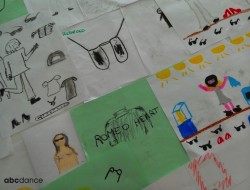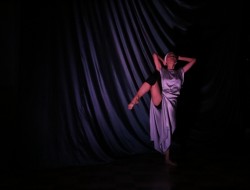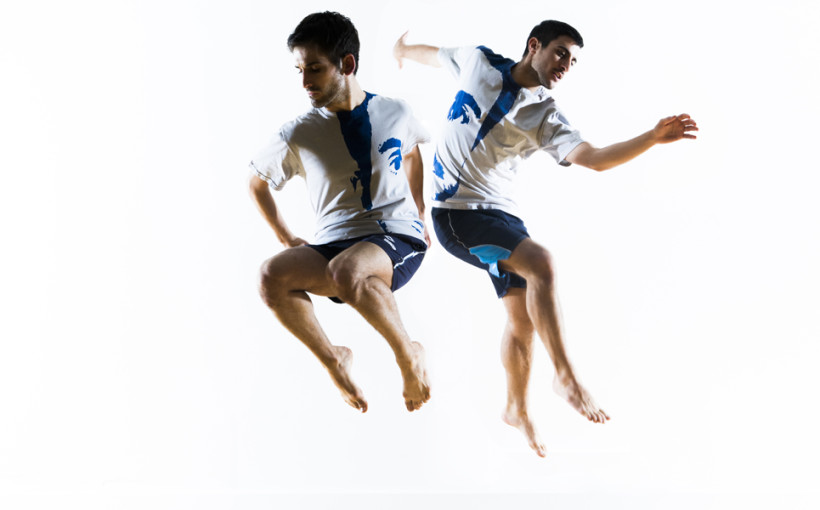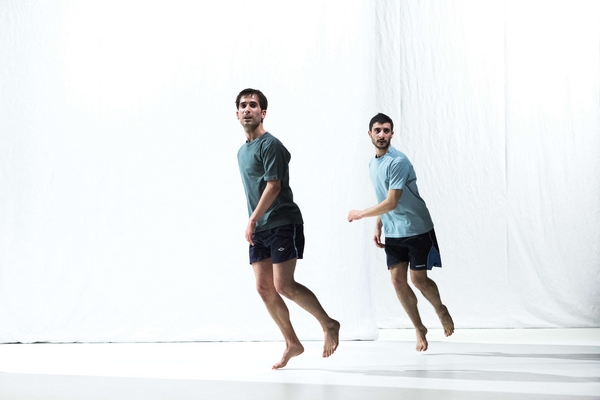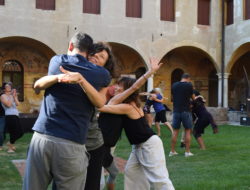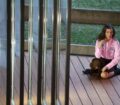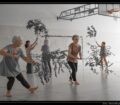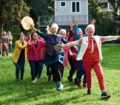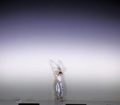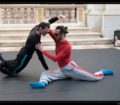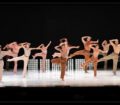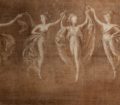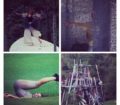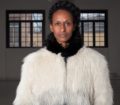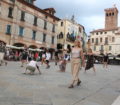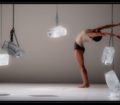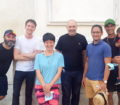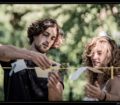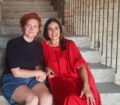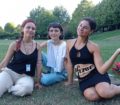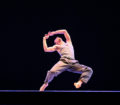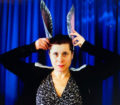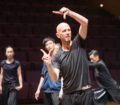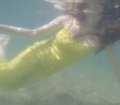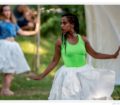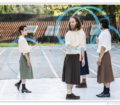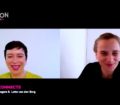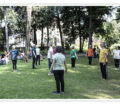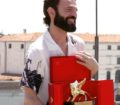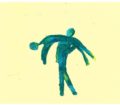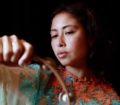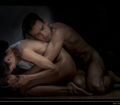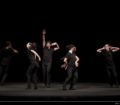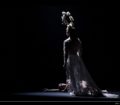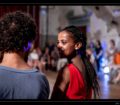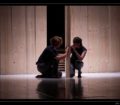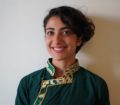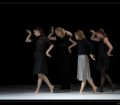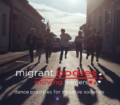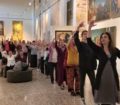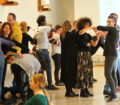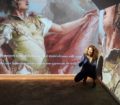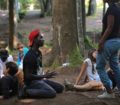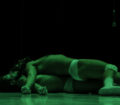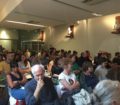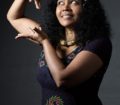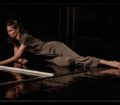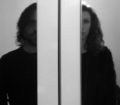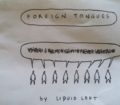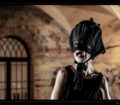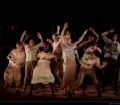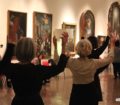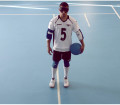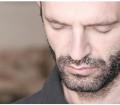They raised the alcohol level among the audience of Bmotion Dance, arousing hilarity and surprise from the very first moment. By sharing a daily gesture (in this case it was sharing a shot of Grappa Nardini), they switched on the sense of presence and interest of the audience, whose reactions became part of the drama.
Igor Urzelai and Moreno Solinas, brown hair the first and dark hair the second, are a very tight-knit italian-spanish couple on and off stage, and their innate pleasentness easily conquers everyone.
Starting on a similar path, at first they became a couple and just in a second moment they started to be interested in working together, bringing into the creative process their different abilities: Moreno is more rational and rigorous on the work’s composition, Igor likes to look into details and connect them to each other.
One fundamental step of their artistic development was the dissolution of BLOOM!Dance collective, the collective of which they were the co-founders. The period of crisis that followed has indeed led them over to a period of reflection and realization of their work, adressing their research path. And this produced its benefits.
Igor and Moreno staged in Europe and USA, gaining acknowledgements from audience and institutions: they were selected for the National Dance Awards and for the Total Theatre Awards in 2015. They also were selected in the 2016 edition of British Dance, for the 2015 British Council Showcase and for the artistic network project Anticorpi XL. Today they cooperate with The Place in London, within the program «Work Place».
They were selected by the network Aerowaves three times, the last time in 2015 with «Idiot-Sincrasy» that we saw on the stage of Bmotion Dance 2016 – OperaEstate Festival Veneto on August 27 @ Garage Nardini, Bassano del Grappa.
Following their interview...
Could you tell us when and how you started dancing?
Igor: I was a child when I started with Folk Dance in the Basque country, maybe because it was the only way to get in touch with dance or maybe because I really needed to move! But I was the youngest in the school and I had to take part in many competitions and I didn’t like it. Then I studied theatre for a long time, but when I turned twenty I realized that what I really appreciated in Theatre wasn’t words but movement. Folk Dance is a dance of energy, rhythm and group. So I returned irredeemably to dance. It’s been nice to return to dance directly from the contemporary language, without going through ballet, and to explore reality and life more with the body language than with words.
Moreno: My path was similar. I was a hyperactive child, my parents enrolled me into a Latin American Dance school. I danced for many years, and took part in many competitions, but I realized that this kind of style didn’t belong to me, and I didn’t like competing as well. So I switched to Jazz and Modern Dance, and then to Ballet and Contemporay Dance.
When did you decide to work together?
Moreno: We are engaged since 2006, from the “first day of school”. We started experimenting at college. It was not easy to work together. The first project was quite hard because we had to find a balance between personal life and work.
Igor: We started helping each other. We have a good intellectual and artistic affinity, we take things in the same way but from different perspectives. We challenge each other.
Moreno: Our abilities are very different, and each of us takes care of different aspects within the creative process. Igor works better with drammaturgy and connecting the concept we are working on with the materials that are been produced. I work better with movements and the vocal activity. We learnt to work together. Every partnership needs time to find a balance, armony… but it seems good (laughing with complicity), it’s going on!
How did you get to Idiot-Sincrasy?
Igor: We were part of a Collective, but we all wanted to take different paths and we did. This coincided with a crisis, also in terms of budget, and we started questioning ourselves on what was the goal of our work. We moved to Sardinia to work and think. We thought a lot about what we really wanted to do, and about our Dream and how to protect it. This became the beginning for me.
Moreno: Idiot-Sincrasy is the first work we created without preparing the material previously – to create the work on it in a second moment. We spent a lot of time to realize what was the goal we wanted to achieve, what was the goal we wanted to set in terms of experience with the audience, and from this we created and developed the whole show keeping in mind what was really important for us. We created some key concepts that became Idiot-Sincrasy.
You built the work on the jump, a basic movement that is apparently simple…
Moreno: In the creative process we didn’t start from the idea to jump. We started from different ideas of which we then tried to find the essence. The jump is always present through the show, it’s its backbone, but while we are jumping we bring the audience’s attention close to us and to the difference between us, how our bodies change, how we change the space, to little details, connections, change of atmosphere. All these things came from the material on which we worked on through the creative process.
Igor: We tried to understand what was linking all this material and brought it out. The main goal for us to share an experience with the audience.
Yes you did it. You made us drunk with grappa!
We were laughing together but then Igor prefered to clarify: «No, no one was drunk!»
Often we take part in shows where the so-called “forth wall” breaks down, and the dancer experiences direct relationship with the audience. The audience is involved in your work in some moments. Where does this need come from?
Moreno: In most of our shows we always want to open the forth wall. Just in the last work we decided to build it.
Igor: Why?
Moreno: Because it’s in my interest that the audience comes not just to watch me. I’m curios on what’s going to happen at the first encounter with the public: we have an appointment, we come to theatre, we do something and this influences the audience. We try to open a space because what happens on stage would have a real influence on the audience. We want to switch on a relationship of emphaty and complicity.
Moreno: For me Theatre means encounter, assembly, community. We try to make the audience not forget its presence.
In your work you sing evocative songs, and let me say you sing very well! Idiot-Sincrasy includes a popular song from Sardinia. How do you build the relationship between your dance and these songs? In which way can they get us in the depth of your choreography?
Moreno: I always liked to sing, Igor thought he was not able to. When the Collective dissolved, I produced two solos where I wanted to create each visual and sound aspect of the show with the body. Everything had to come from the body, and I continued to work on this in Idiot-Sincrasy and in the next shows. In Idiot-Sincrasy we invited the singer Melanie Pappenheim to help us become aware of our voice. Melanie has a long experience with contemporary dance companies, and she gave us the tools to connect the singing with the body. We trained and we learnt some techniques. I believe that this comes from our interest on everything that concerns the body, and the voice is movement.
Igor: The voice comes from the body, it’s a movement that we don’t see but feel. We are curious about the body in all senses. When I went back to dance from Theatre, I was happy because I could stop using the voice, I was afraid to use it again, but it’s true it is an extension of the movement. We studied a lot “cantu a tenore”, a sardinian pastoral song, because it’s less rational, more animal, less classical but more ancient.
(Cantu a tenore represents a form of polyphonic singing performed by a group of four men using four different voices).
Moreno: The four voices represent natural and pastoral elements, and we thought it was a sound that could bring the vocal dimension in depth into the body, into the bowel.
In the show there is also a connection with folk dance. What about the realtionship between Contemporary and folk fance?
Moreno: Questioning onto why we dance and what it serves, we didn’t look for an answer but we looked for dance in history, and the most social dance is folk dance. We understood the connection between ancient and contemporary dance.
Igor: If folk music and dance are still alive there is a reason, and the way they create a social dimension of movement and sound is, to us, very intriguing.
Idiot-Sincrasy has been selected by the network Aerowaves. How has this experience impacted on your work and your carrier?
Moreno: This is not the first time we are selected by the network. We have been already selected with the Collective in 2011 and 2013. Thanks to the network we met a lot of artists, festival directors, various organizations, and it opened a lot of possibilities for residences in other european countries, and it also guaranteed a tourneè. Throughout the years, thanks to the network we developed many relationships that had started previously.
Igor: It gave us the opportunity to learn more about this work, because so often we meet the same artists in Aerowaves tourneè, and we can compare the work with the same people in different places and with very different people at the same time, so you learn to develop the work even if it has been created three years ago. Aerowaves not only ensures us a toruneè bu it’s an opportunity to carry on useful conversations after all the performances.
Igor: What’s so special is that it doesn’t seem like a market there for selling yourself, but it’s the encounter of a community.
by Rita Borga
READ MORE ABOUT:
Tags: Aerowaves 2016, Bmotion, Idiot-Sincrasy, Igor and Moreno, Operaestate Festival Veneto

